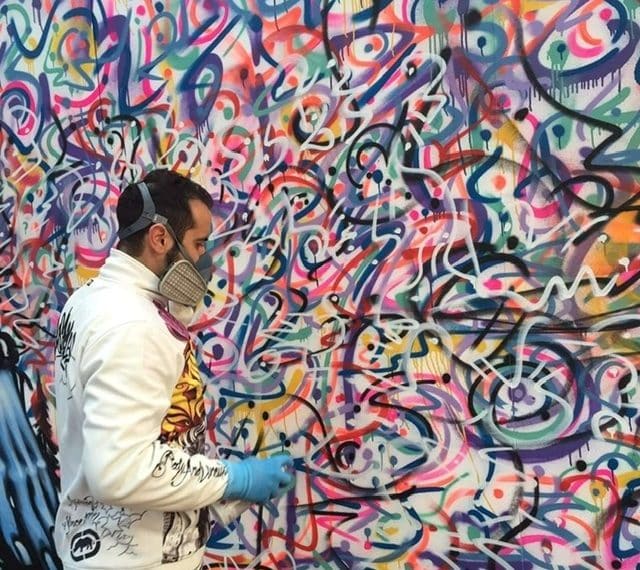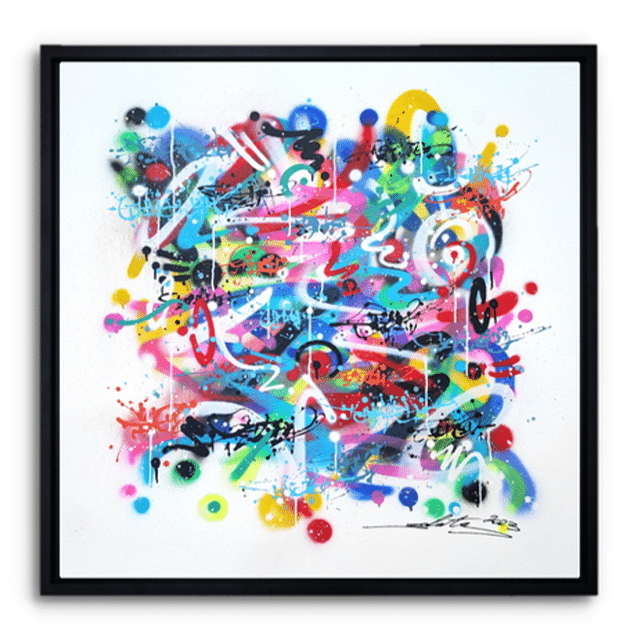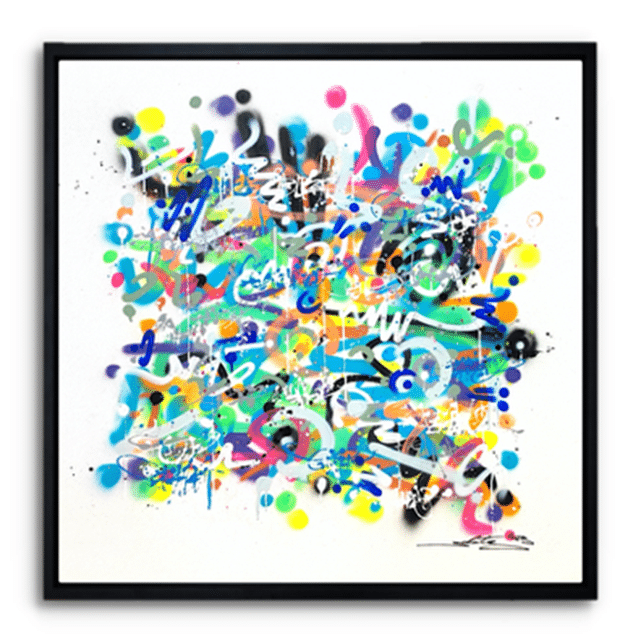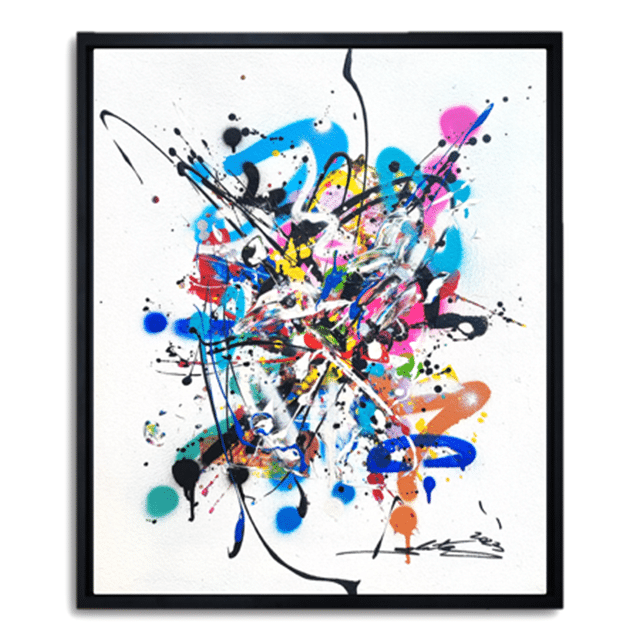
Présentation
Cradled by the counter-culture of the 90s, Zokatos naturally turned to the street as his original field of expression. He has retained the brutality and evocative power of graffiti, as well as a certain conception of painting. From the wall to the canvas, his work has evolved, while retaining the tools of street art, markers and spray cans for the most part.
His abstract, colourful compositions now stand in stark contrast to the pragmatic, grey world of the Parisian housing estates of his childhood.
His work, already rich and varied for a 29-year-old artist, is an original synthesis of urban and abstract art, moving from spray paint to watercolour, from canvas to sculpture, with the ease of the great self-taught. The softness of a non-figurative aesthetic made up of shapes and bright colours is as if violated, brutalised by the tools used, the drips and spontaneity of the artist’s gesture.
It’s an allegory of the urban artist’s dilemma, the constant tug-of-war between the street, the eternal showroom, and the canvas, the necessary evil. If it makes sense to compare his aesthetic with that of illustrious painters, we can cite the masters of the New York School: from Pollock’s action-painting, for the rhythm imprinted on each composition, to the post-painterly abstraction of Sam Francis, a genius of colour.
We might also mention the lyrical abstraction of Mathieu, Schneider and Hartung, whose artistic approach, based on the absence of premeditation in the gesture and the speed of execution, was conducive to revealing artistic genius, with the paintings becoming the direct transcription of the painter’s emotion. It is this same emotion that we find in Zokatos’s painting, the raw emotion of the artist who paints to exist and for whom the canvas, the medium of vital expression, is an end in itself.







